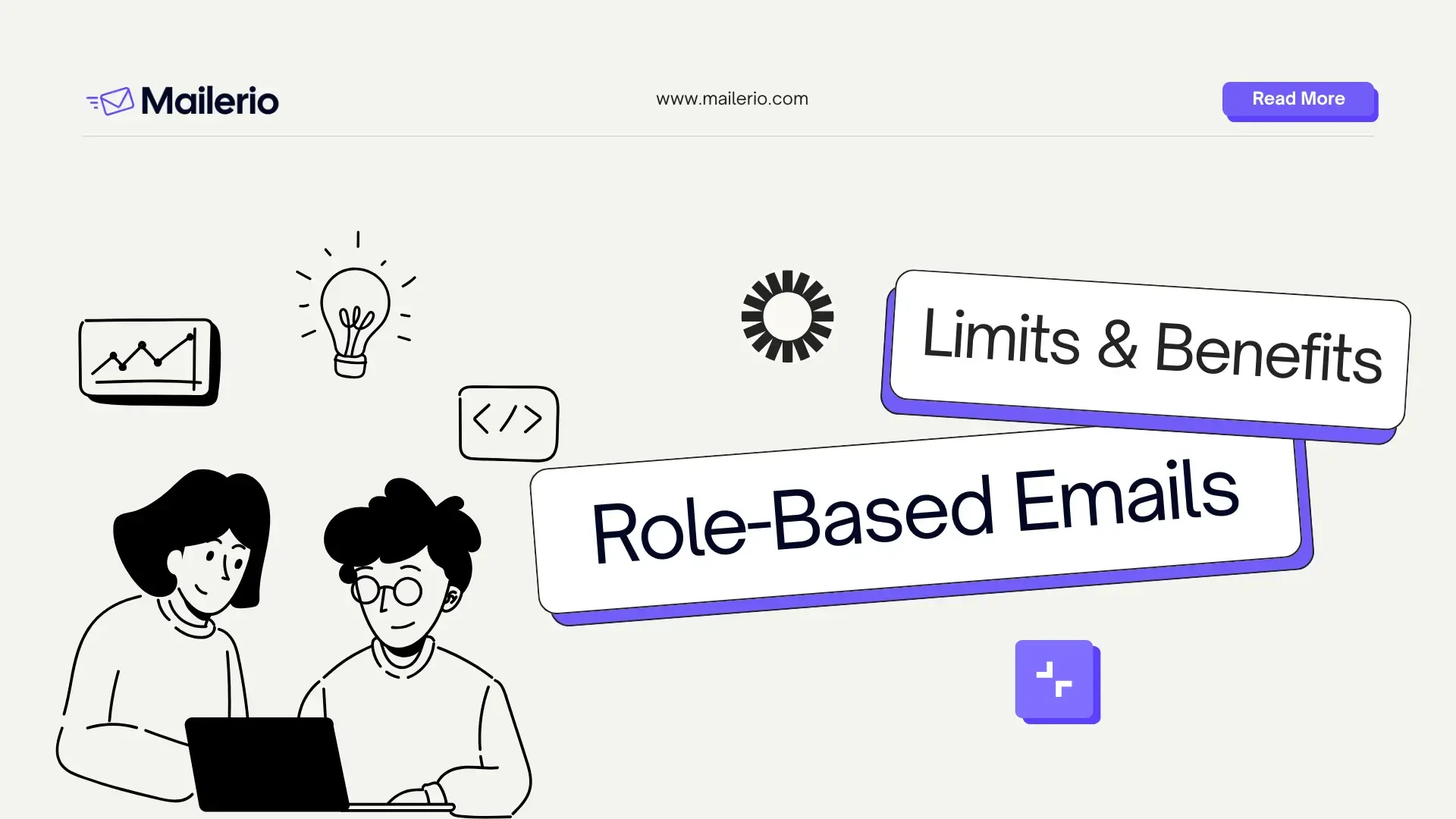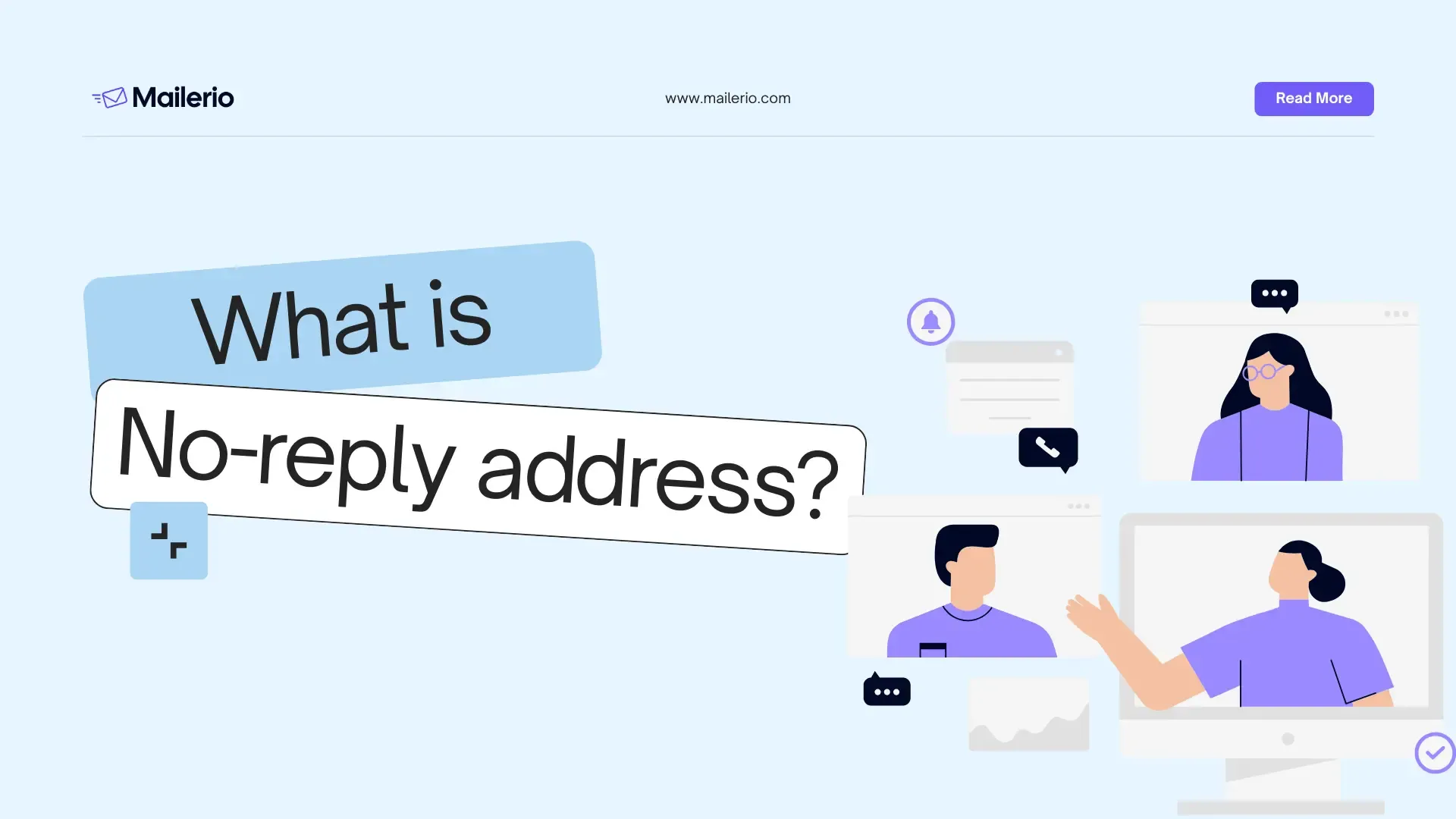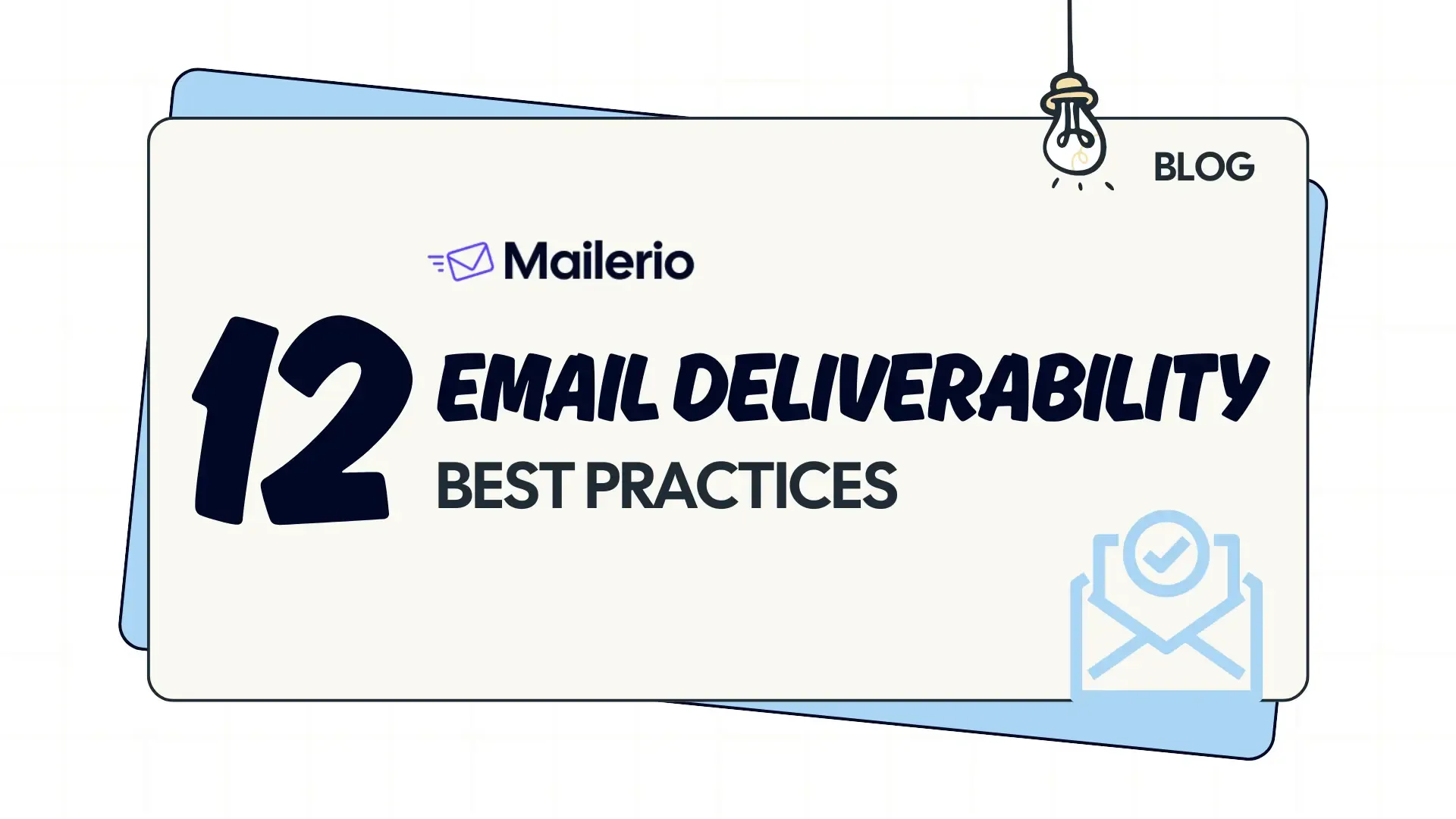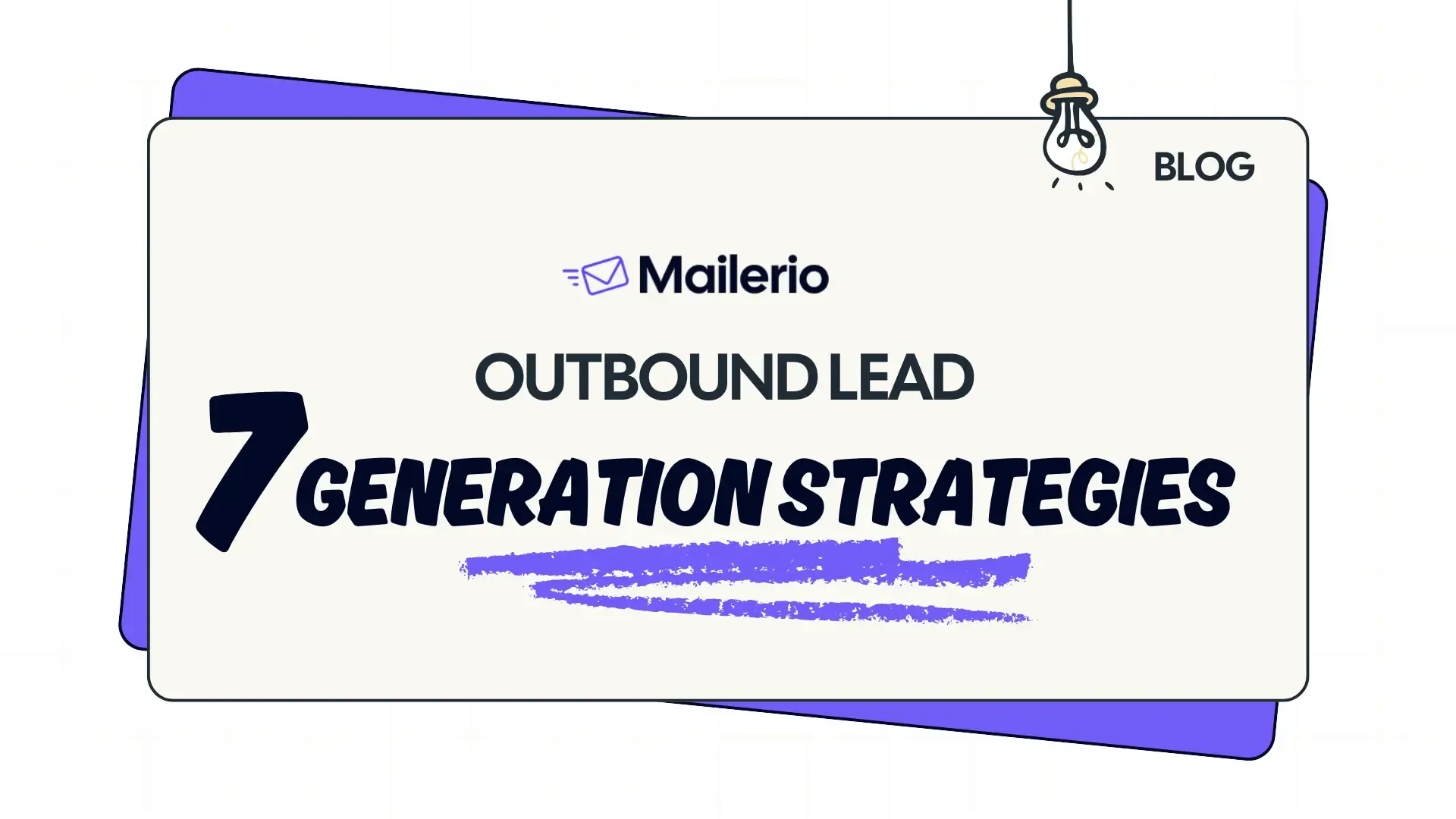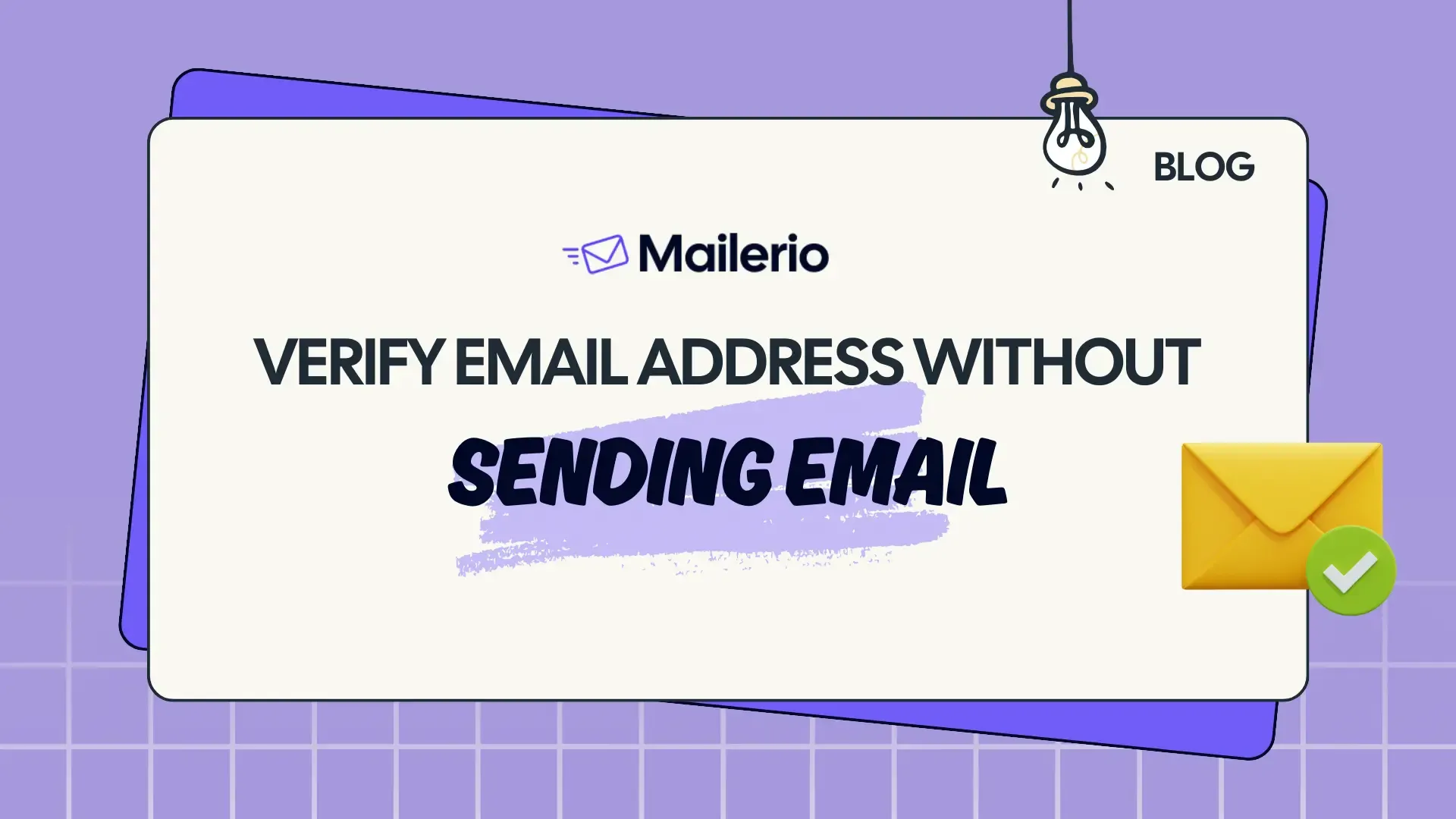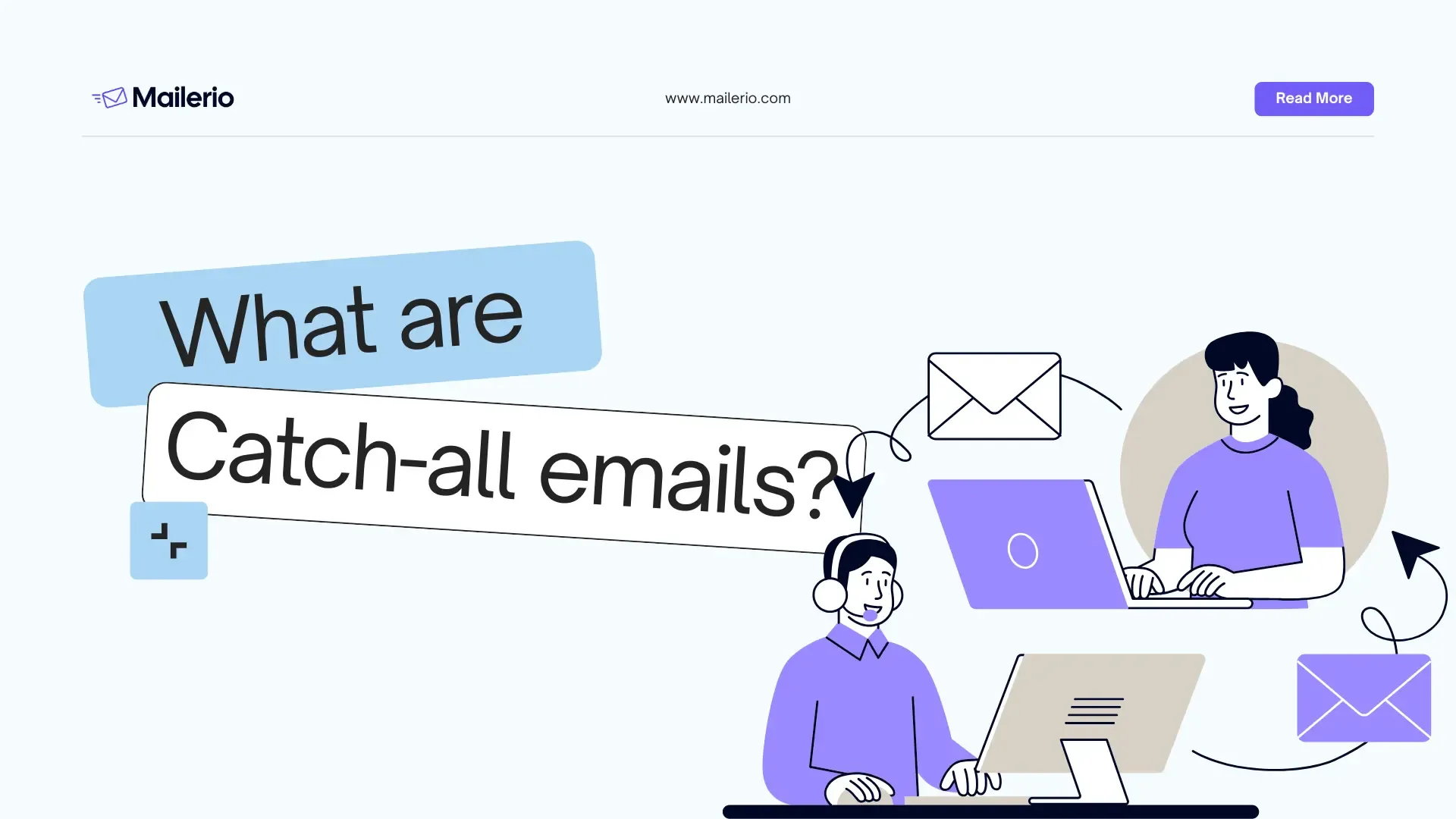
Email marketing can be a goldmine for businesses, but only if your messages actually reach real, engaged recipients. One hidden challenge that often sabotages campaigns is the elusive catch‑all email address. Unlike regular email accounts, a catch‑all address is set up to accept every email sent to a domain, even if the specific mailbox doesn’t exist. On the surface, this seems like a safety net for marketers: no more lost emails due to typos or incorrect addresses.
But there’s a catch.
While catch-all addresses ensure delivery to the domain, they bring uncertainty. You might be sending messages that never reach a real person, hurting engagement, increasing bounce rates, and potentially damaging your sender reputation.
Table of contents:
- What Is a Catch‑all Email?
- Why Organizations Use Catch‑all Email Addresses
- How Catch‑all Emails Affect Email Marketing & Deliverability
- Can You Verify a Catch‑all? (Challenges & Constraints)
- Step-by-Step: How to Verify & Manage Catch‑all Addresses
- Best Practices & Decision Criteria
- Frequently Asked Questions (FAQs)
- Conclusion & Takeaways
In this article, we’ll break down exactly what catch‑all emails are, why organizations use them, the risks they pose for email marketing, and, most importantly, how you can verify and manage them to protect your campaigns. By the end, you’ll know how to confidently handle catch-all addresses and make smarter decisions for your email list.
TL;DR
Catch‑all emails are mailboxes or server setups that accept all emails sent to a domain, even if the specific address doesn’t exist. While they prevent bounces and ensure messages aren’t lost, they introduce uncertainty because you can’t know if an actual recipient will see the email.
For marketers:
- Catch-all addresses can reduce bounces but may lower engagement and impact deliverability.
- Verification is tricky, but tools like Mailerio can detect catch-all domains, provide risk scores, and generate detailed reports to guide your sending strategy.
- Best practices include segmenting catch-all addresses, testing with small campaigns, monitoring engagement, and maintaining list hygiene.
- Use Mailerio’s single, bulk, or API validation to make data-driven decisions on whether to send to each address.
In short, catch-all emails can be valuable leads if managed strategically, but careless sending can hurt your sender’s reputation. Verification and careful monitoring are key.
What Is a Catch‑all Email?
A catch‑all email, sometimes called an accept‑all email, is a special type of mailbox or server configuration that accepts every email sent to a domain, regardless of whether the specific recipient address actually exists. In simpler terms, if someone sends an email to a mistyped or non-existent address at that domain, the catch‑all setup ensures the message still lands somewhere, usually in a designated mailbox.
How It Works
Normally, when you send an email to a nonexistent address, the server returns a bounce-back message indicating the address is invalid. With a catch‑all, the server silently accepts the email and delivers it to the catch-all inbox, preventing a bounce.
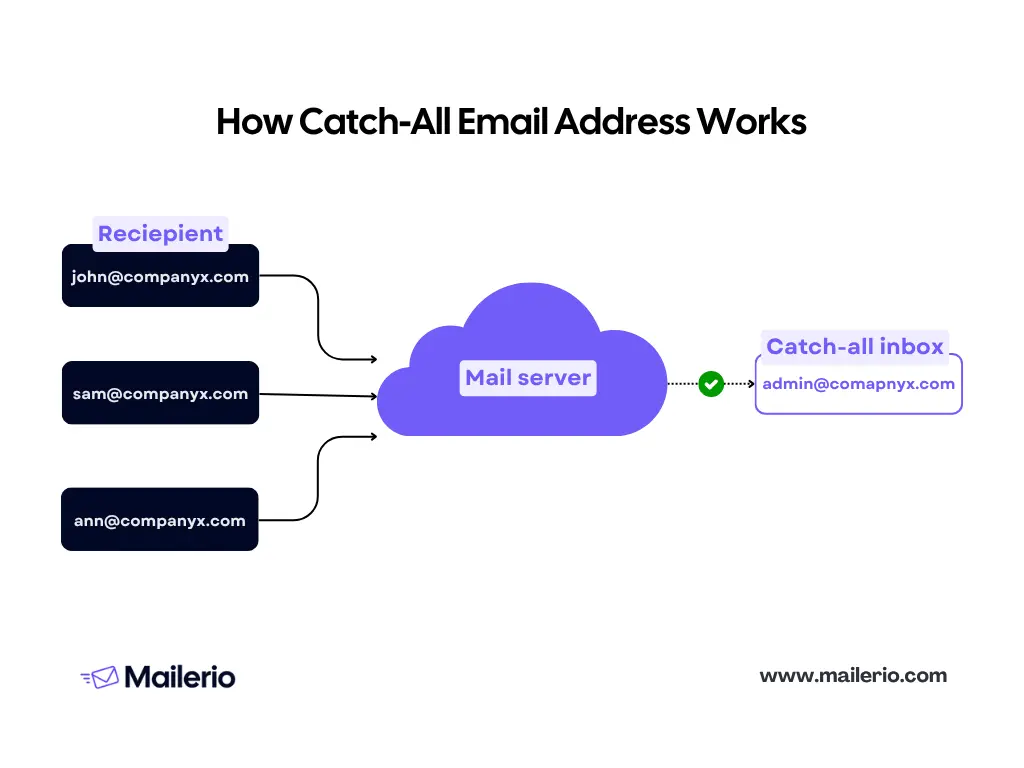
For example, imagine a domain example.com with a catch‑all configured:
| Sent To | Exists? | Outcome |
|---|---|---|
| john@example.com | ✅ Yes | Delivered to John’s inbox |
| sales@example.com | ❌ No | Delivered to catch-all inbox |
| random@example.com | ❌ No | Delivered to catch-all inbox |
This mechanism ensures that emails to typos or unknown recipients don’t get lost, but it also introduces uncertainty for senders trying to verify addresses. So if you’re looking for a way to send emails only to real addresses, start validating emails now.
Make Sure Your Emails Land in Inbox!
Validate Email Lists To Protect Your Sender Reputation
Catch‑all vs. Other Email Types
It’s important to distinguish catch‑all addresses from similar email setups:
- Alias / Forwarding: Redirects a specific, valid address to another mailbox. Unlike catch-all, it won’t accept random addresses.
- Role-based Addresses: Generic addresses like
info@orsupport@. They are specific and intended for group handling, not for catching all mail. - Disposable / Temporary Emails: Short-lived addresses created for one-time use, often ignored in verification. Learn more about disposable email addresses in our article.
Here’s a visual representation of how different types of emails work 👇
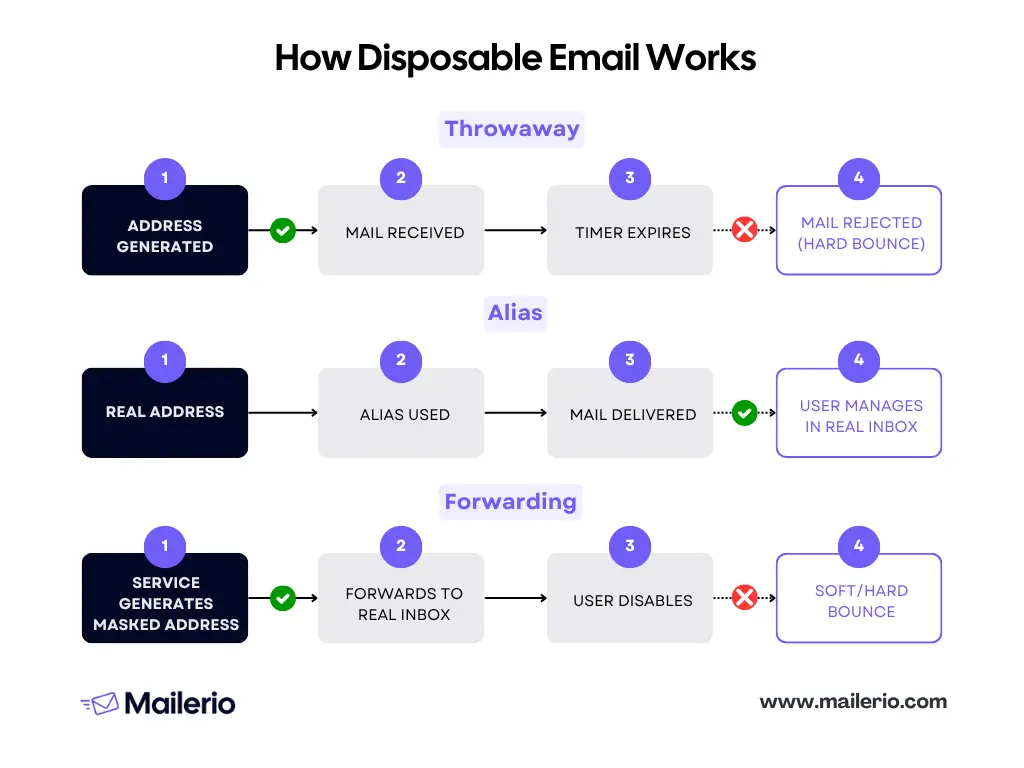

Why Catch‑all Exists
Organizations use catch-all setups for several reasons:
- Prevent Lost Emails: Typos or misaddressed emails still reach someone in the organization.
- Centralized Management: Smaller organizations can route all unexpected mail to a single inbox for review.
- Compliance or Archival: Ensures no incoming email is missed for audit, legal, or customer support purposes.
A catch‑all email ensures no message is rejected at the domain level, but it also creates ambiguity. From an email marketing perspective, sending to catch-all addresses carries uncertainty: you may reach a real user, or you may simply send mail into a void. This is especially important for outreach or omnichannel marketing, where businesses depend on deliverability.
Why Organizations Use Catch‑all Email Addresses
Catch‑all email addresses might seem like a minor technical detail, but they serve important purposes for many organizations. Understanding why businesses set up catch‑all addresses helps marketers grasp both the potential benefits and the risks when sending emails to these domains.
1. Prevent Losing Emails from Typos or Variations
People frequently mistype email addresses: missing letters, swapped characters, or forgotten dots are common. A catch‑all ensures that even these incorrectly addressed emails reach the organization, preventing potential leads or critical messages from being lost.
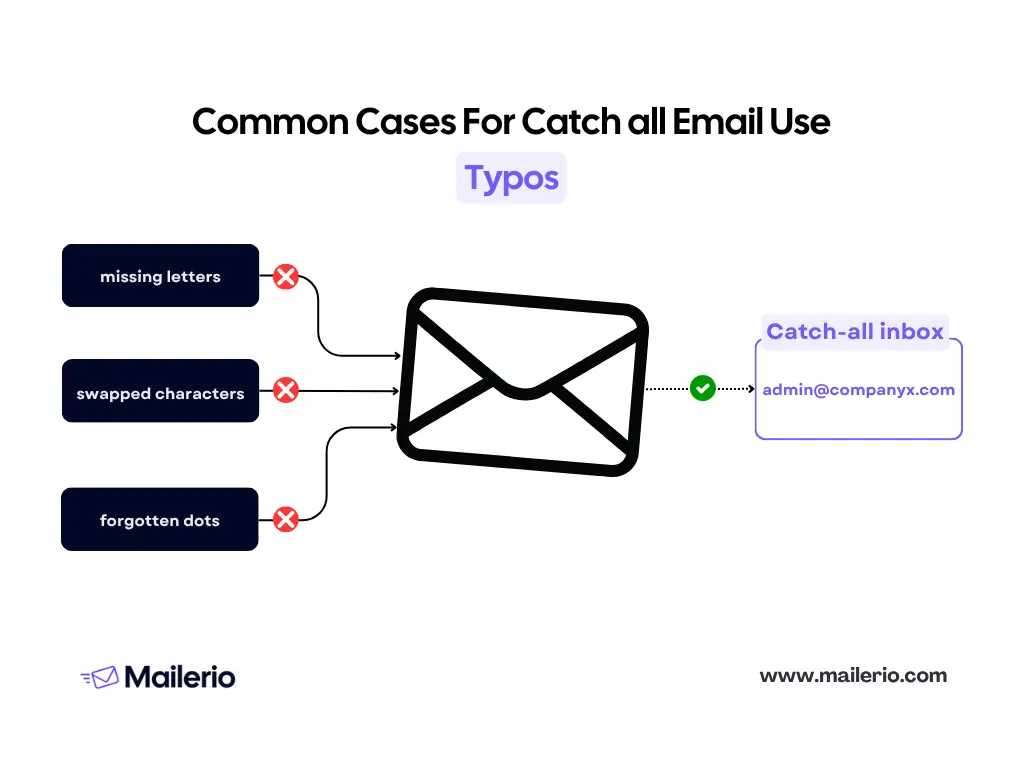

For example, an email sent to john.smith@company.com might be intended for john.smyth@company.com. With a catch-all, the server accepts the message, giving the organization a chance to see it and redirect if necessary.
2. Centralized Email Management
Smaller organizations often don’t have the resources to manage dozens of individual inboxes. A catch‑all allows them to funnel all misaddressed or unexpected emails into a single mailbox. This simplifies email management and ensures nothing slips through the cracks.
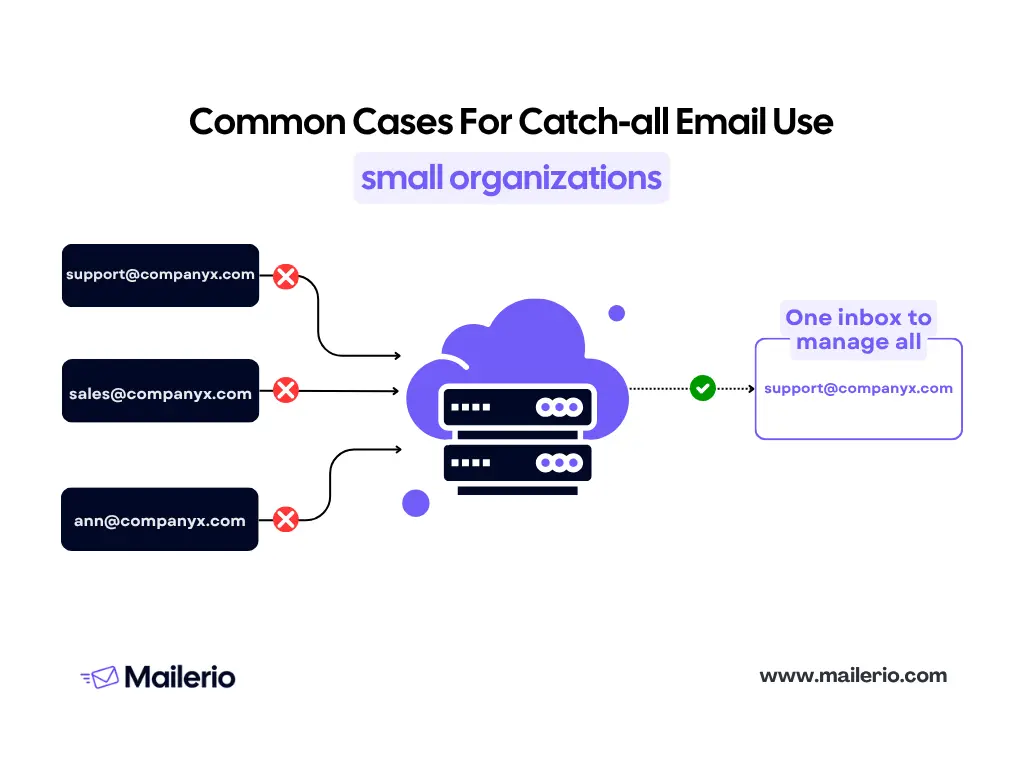

3. Compliance, Logging, and Archival
Certain industries require strict record-keeping of communications for legal, regulatory, or auditing purposes. Catch-all addresses help organizations archive every email sent to the domain, even if it was addressed to a non-existent mailbox. This ensures full visibility and accountability.
4. Security and Monitoring
Catch-all addresses can also serve as a safety net for monitoring email activity. They help identify unusual or suspicious email patterns, including spam or phishing attempts targeted at non-existent addresses. Some organizations even use catch-all mailboxes as honeypots to detect malicious activity.
5. Trade-offs and Considerations
While catch-all addresses provide these advantages, they come with trade-offs:
- Increased spam: Since every email is accepted, spam can flood the catch-all inbox.
- Noise in the inbox: Valuable emails can get buried among unwanted messages.
- Maintenance burden: Regular monitoring and filtering are required to manage the incoming flow.
Organizations use catch-all email addresses as a safety net, a centralization tool, a compliance mechanism, and even a security measure. For marketers, this means that while catch-all addresses increase the chance that an email is delivered, they also introduce uncertainty about who actually reads it, a factor that directly impacts email verification and deliverability strategies. Hence, you need to validate emails before sending.
How Catch‑all Emails Affect Email Marketing & Deliverability
For email marketers, catch‑all addresses are a double-edged sword. On one hand, they prevent bounces from typos or unknown addresses. On the other hand, they introduce uncertainty that can harm your campaigns if not managed carefully.
1. Advantages of Sending to Catch‑all Addresses
- Minimized Bounces: Since catch-all domains accept all incoming emails, your campaigns see fewer immediate bounce messages. This is particularly useful when targeting new leads through outbound or unverified lists.
- Opportunity to Reach Legitimate Users: Some catch-all addresses do correspond to real recipients. Sending to them could capture valid leads you might otherwise miss.
- Maintains Sender Reputation in the Short Term: A lower bounce rate can help preserve your sender score, at least initially, as email providers track bounces as a negative signal.
2. Disadvantages and Risks
While catch-all addresses appear safe, they carry hidden risks:
- Uncertain Deliverability: Catch-all servers accept emails at the domain level but might silently discard them or reject them later, making true delivery unpredictable.
- Low Engagement Rates: Many catch-all inboxes are not actively monitored, leading to few opens, clicks, or replies. Low engagement signals can hurt your sender’s reputation over time.
- Reputation Damage: Continuously sending emails to unengaged catch-all addresses can increase the likelihood of being marked as spam or blacklisted.
- Wasted Resources: Sending large volumes to uncertain addresses can waste budget, time, and bandwidth, especially in large campaigns.
Protect Your Sender Reputation With Mailerio!
Sign Up & Get 100 Credits Upon Registration
3. Edge Cases and Nuance
Not all catch-all domains are problematic. Some are maintained by organizations that actively monitor their catch-all inboxes, meaning your emails may still reach a real person. Conversely, some domains may disable their catch-all configuration later, converting what was once a safe address into a potential bounce.
4. Metrics to Watch
To manage catch-all addresses effectively, focus on these key metrics:
- Bounce Rate: Over time, a rising bounce rate can indicate non-engaged catch-all addresses or changing server behavior. Learn more about bounce rate benchmarks here.
- Open and Click Rates: Low engagement signals potential issues.
- Spam Complaints: Even catch-all inboxes can report emails as spam, damaging sender reputation.
- Domain Reputation: Track domain-level feedback from email service providers (ESP) to ensure your list quality is maintained.
Catch-all addresses reduce immediate bounce risk but increase long-term uncertainty. Email marketers as well as cold outreach experts need to balance the opportunity to reach potential leads against the risk of low engagement, reputation damage, and wasted resources. Managing catch-all domains effectively requires monitoring metrics, segmenting addresses, and adopting verification strategies.
Can You Verify a Catch‑all? (Challenges & Constraints)
Verifying email addresses is a standard step in email marketing to ensure best email deliverability practices and protect sender reputation. However, catch-all addresses pose a unique challenge.
1. Why Verification Is Hard for Catch‑all Emails
Normally, email verification involves checking whether an email address exists on the server using SMTP protocols. For most standard addresses, this process works well: the server either confirms the address exists or returns a bounce message.
With catch-all domains, the situation is trickier:
- The server accepts all emails, whether the recipient exists or not.
- SMTP checks will always return a “valid” response, even if the mailbox is inactive or ignored.
- This means traditional verification methods cannot reliably determine whether an email actually belongs to a real, active user.
In other words, a catch-all domain may appear “valid” during verification, but the email may never reach an actual recipient. That’s why you should always carefully determine if you want to send to a catch-all address or not. Mailerio’s validation tool will always show whether the email is a “catch-all” or not and mark it as risky, as you never know if the recipient will get your email, so you can end up wasting your budget.


2. What Verification Tools Can Do
Although traditional methods have limitations, modern email verification tools provide ways to identify catch-all addresses and manage their risks:
- Detection: Tools like Mailerio can detect whether a domain is configured as catch-all.
- Risk Scoring: These tools can assign confidence levels or scores, helping marketers decide whether it’s worth sending emails to these addresses.
- List Segmentation: Once detected, catch-all emails can be separated from your main list, allowing for careful testing or cautious campaign targeting.
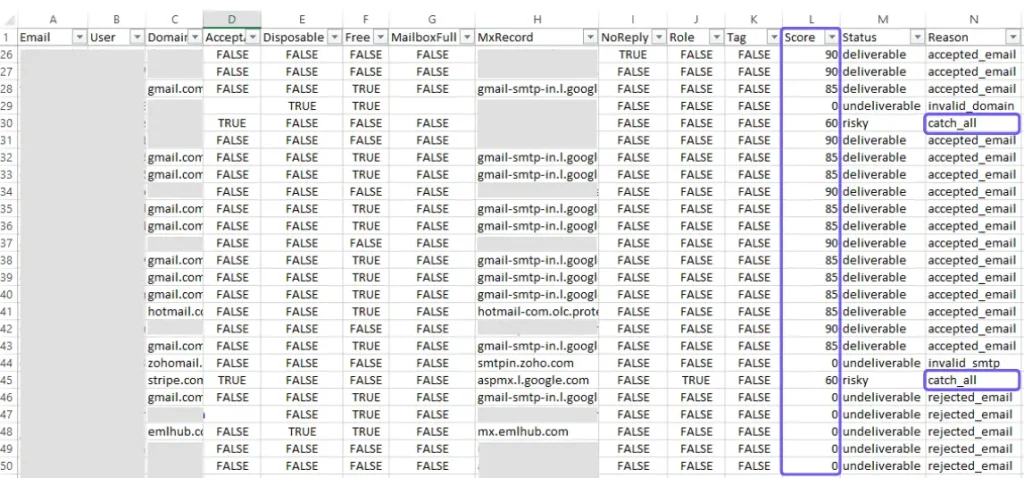

Remember that sending emails to undeliverable addresses will hurt your sender reputation and eventually make your emails land in the spam box.
Protect Your Sender Reputation With Mailerio!
Sign Up & Get 100 Credits Upon Registration
3. Additional Heuristics Used by Verification Tools
Beyond simple SMTP checks, sophisticated tools analyze:
- MX and DNS records
- Domain age and history
- Engagement metrics (opens, clicks, replies)
- Patterns in email activity
By combining these signals, verification tools provide actionable insights for managing catch-all addresses — even if they can’t guarantee a mailbox is actively monitored.
You cannot fully verify a catch-all email in the traditional sense, because the server will accept all emails. However, using modern email verification tools like Mailerio can help you:
- Detect catch-all domains
- Assess risk and engagement potential
- Make informed decisions about sending campaigns
This approach allows marketers to minimize wasted effort and protect their sender reputation while still taking advantage of potential leads behind catch-all domains.
How to Verify Catch‑all Addresses
Managing catch-all addresses effectively requires a systematic approach. Since these addresses can be unpredictable, following a structured workflow helps protect your sender reputation and ensures your campaigns reach real users.
- Identify Catch‑all Domains
The first step is to detect which addresses in your list are catch-all. Modern verification tools like Mailerio make this easy:
– Users can sign up for Mailerio and access its verification dashboard.
– You can run single email checks, bulk validations, or integrate Mailerio via API for automated verification.
– The platform will identify catch-all domains and provide a detailed report, helping you understand which addresses are uncertain or high-risk.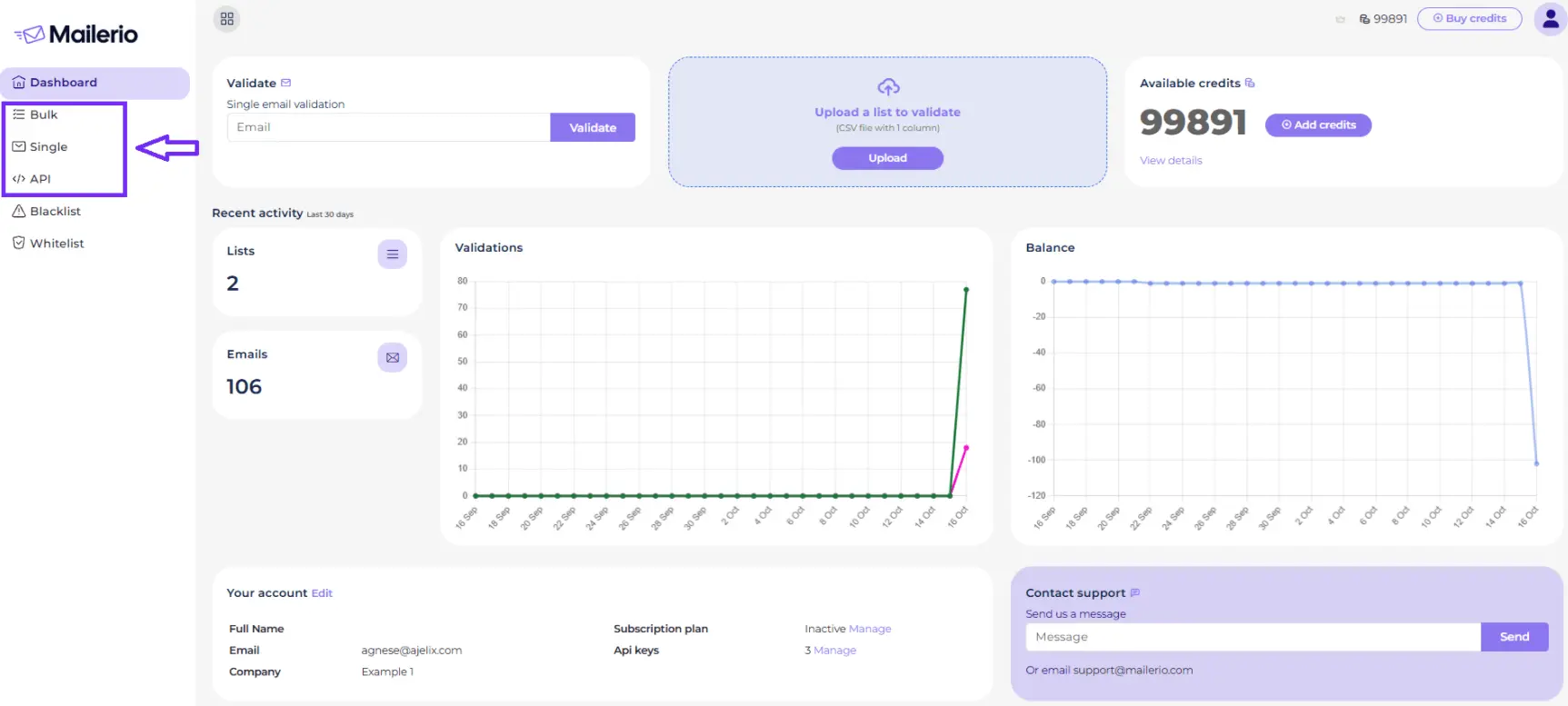
- Segment and Label Catch‑all Addresses
Tag catch-all emails separately in your CRM or email marketing platform. Create a dedicated segment for these addresses to prevent accidental inclusion in high-volume campaigns. This segmentation allows for cautious testing while protecting your main email list. Or just extract these emails from your sending list.
- Test Cautiously
Before sending large campaigns, send small, low-risk test emails to a subset of catch-all addresses. Track opens, clicks, and replies to see which addresses are genuinely active. Mailerio’s detailed reports can help you interpret engagement potential and decide whether it’s worth sending to each address.
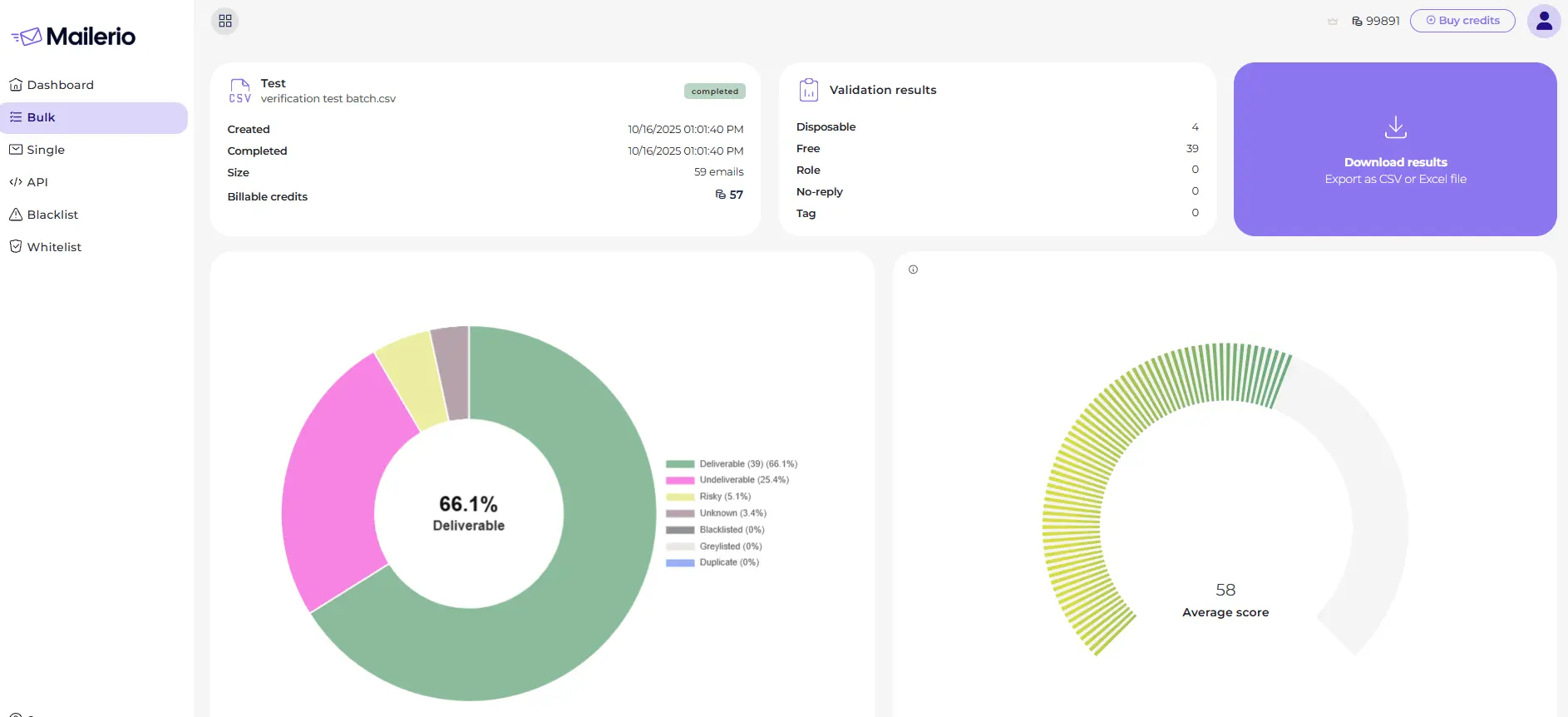
- Monitor Engagement and Bounce Behavior
Keep an eye on engagement metrics over time. If a catch-all address consistently shows no activity or bounces, consider flagging it as low-value and removing it from your list. Addresses showing engagement can be promoted to your main campaign list.
- Make Informed Decisions
Using Mailerio, you can review comprehensive reports on each catch-all address or domain.
Decide whether to send emails based on risk, engagement potential, and business priorities.
Prioritize high-confidence addresses while minimizing exposure to unmonitored or inactive catch-all inboxes.
- Automate and Integrate
Integrate Mailerio via API to automatically validate new sign-ups or leads in real time. Set up workflows to auto-flag or segment catch-all addresses for future campaigns. Periodically re-validate your email list to maintain hygiene and accuracy.

By using a structured approach and leveraging tools like Mailerio, marketers can confidently handle catch-all addresses. Detection, segmentation, testing, and detailed reporting allow you to send emails strategically, minimizing risk and maximizing engagement while protecting your sender reputation.
Best Practices & Decision Criteria for Catch‑all Emails
Managing catch-all addresses requires a balance between opportunity and risk. By following best practices and using reliable tools like Mailerio, you can make informed decisions that protect your sender reputation and maximize campaign performance.
1. When Not to Send to Catch-all Addresses
There are situations where sending to catch-all addresses is too risky:
- If your campaign has strict deliverability goals, such as critical transactional emails.
- When budget or resources are limited, and every send must count.
- If the catch-all domain shows low engagement or high risk in previous campaigns.
2. Sending Strategically
When sending to catch-all addresses is justified:
- Segment these addresses separately and start with small test campaigns.
- Use Mailerio to validate and score these addresses before sending. Mailerio’s detailed reports provide insights into risk, engagement potential, and domain health, helping you make smarter decisions.
- Gradually increase sending volume to high-confidence catch-all addresses that show real engagement.
3. Maintaining List Hygiene
- Regularly audit your email list to remove stale or inactive catch-all addresses.
- Use Mailerio’s bulk verification feature to refresh your list periodically and flag new catch-all domains.
- Keep your suppression lists updated to avoid repeated sending to unresponsive or risky addresses.
4. Using Verification Scores
- Tools like Mailerio provide risk scores and detailed insights for each email or domain.
- Use these scores to decide whether to send, delay, or avoid sending to specific catch-all addresses.
- Prioritize high-scoring addresses for campaigns, and treat low-scoring addresses cautiously.
5. Automate Whenever Possible
- Integrate Mailerio via API to automatically validate new leads or sign-ups.
- Set rules to auto-segment or flag catch-all addresses, minimizing manual effort and reducing human error.
6. Monitor Performance Continuously
- Track opens, clicks, and replies for catch-all addresses to identify engaged contacts.
- Remove or suppress addresses that show no engagement over time.
- Adjust your sending strategy based on Mailerio reports and campaign metrics.
The best approach to catch-all addresses is strategic and data-driven. Use segmentation, testing, engagement monitoring, and verification tools like Mailerio to make informed decisions. This helps you maximize opportunities from catch-all emails while minimizing risk to email deliverability and sender reputation.
Frequently Asked Questions (FAQs) About Catch‑all Emails
Catch-all email: Accepts all emails sent to a domain, even if the specific mailbox doesn’t exist. Alias: Redirects emails from one valid address to another. Only specific addresses are forwarded. Role-based address: Generic addresses like info@ or support@ intended for groups, not for catching all emails.
Typically, catch-all domains are not spam traps. However, sending to unverified addresses on catch-all domains can still trigger spam complaints or affect your sender reputation, so caution is required.
Not necessarily. Catch-all addresses reduce immediate bounce rates but increase uncertainty about who receives or engages with your emails. Poor engagement or repeated sending to inactive catch-all addresses can eventually harm deliverability.
Regularly auditing your list is recommended. Tools like Mailerio make this easier by offering single, bulk, or API-based validations, providing updated reports and risk scores to guide your sending strategy.
If a domain removes its catch-all configuration, previously accepted emails may start bouncing. Regular revalidation with tools like Mailerio can help you detect such changes and adjust your list accordingly.
Yes. Catch-all addresses are more common in small businesses and startups, which may centralize emails into a single mailbox. Large organizations often avoid catch-all setups to reduce spam and maintain stricter inbox management.
Email Service Providers (ESPs) monitor engagement metrics and bounce rates. High numbers of low-engagement catch-all addresses can lower your sender reputation, trigger spam filtering, or reduce inbox placement. Using verification tools like Mailerio helps mitigate this risk.
Yes, if segment and test catch-all addresses separately, use verification tools like Mailerio for scoring and detailed reports. And monitor engagement and remove unresponsive addresses over time.
Conclusion & Takeaways
Catch‑all email addresses are a unique part of the email ecosystem. They accept all messages sent to a domain, providing organizations with a safety net for misaddressed emails, centralized inbox management, and compliance tracking. For marketers, they present both opportunities and challenges, reducing immediate bounces but introducing uncertainty about engagement and deliverability.
Key Takeaways:
- Catch-all emails are unpredictable.
- They accept all messages at the domain level, but you can’t guarantee the email will reach a real or engaged recipient.
- Verification is essential.
- Traditional SMTP checks aren’t enough. Tools like Mailerio allow you to detect catch-all domains, assign risk scores, and generate detailed reports to guide your decisions.
- Segment and test before sending.
- Keep catch-all addresses separate from your main list. Start with small test campaigns and monitor engagement before scaling up.
- Use data-driven decision making.
- Analyze reports from verification tools like Mailerio, track opens, clicks, and replies, and prioritize high-confidence addresses for your campaigns.
- Maintain list hygiene.
- Regularly revalidate your list, remove inactive or low-engagement addresses, and automate verification via Mailerio’s single, bulk, or API options.
- Balance opportunity with risk.
- Catch-all addresses can be valuable leads, but sending indiscriminately can harm your sender reputation. Strategic use ensures you maximize potential without unnecessary risk.
By understanding catch-all emails, leveraging verification tools like Mailerio, and following best practices, you can confidently manage your email campaigns, protect your deliverability, and make informed decisions about which addresses to engage.

